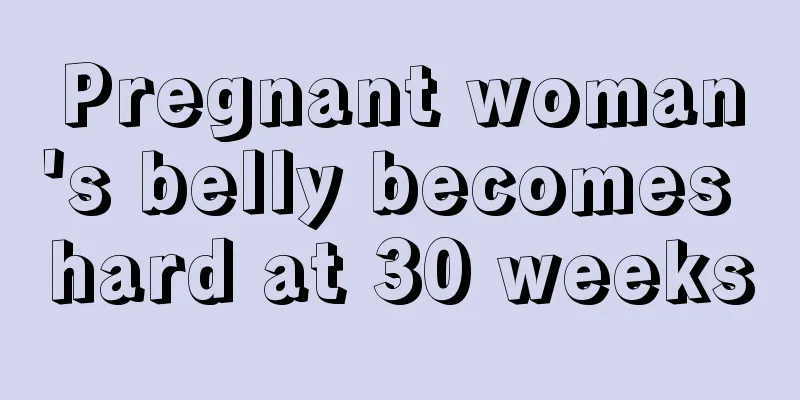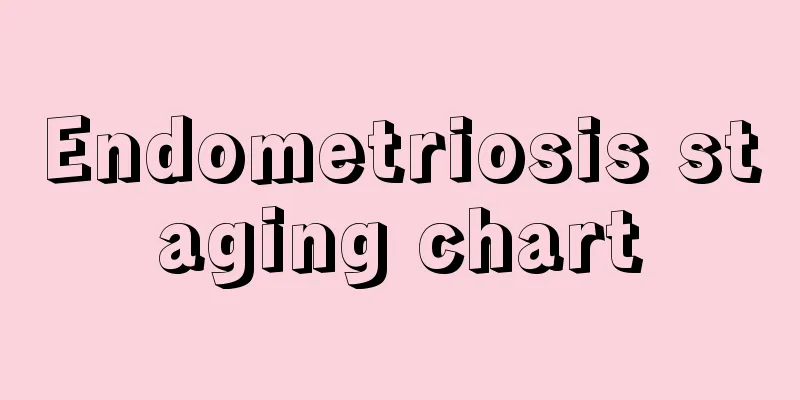Remember the two tips to identify stroke as early as possible

|
Recently, the topic "The first batch of post-90s have become a high-risk group for stroke" has become a hot search, sparking heated discussions among netizens. Every 6 seconds, one person dies from a stroke in the world. Stroke, commonly known as "stroke", is an acute cerebrovascular disease, including hemorrhagic stroke and ischemic stroke, with high morbidity, high disability rate, high mortality rate and high recurrence rate. In reality, ischemic stroke is more common, accounting for more than 80%. 80% of stroke survivors will be left with varying degrees of disability, which brings a heavy burden to individuals, families and society. Remember the formula to quickly identify stroke Stroke is a sudden disease that causes loss of mobility and speech, making it difficult to prevent. Early identification of stroke is crucial to the prognosis of the disease. Memorizing the mnemonics “Stroke 120” and “BE FAST” can help you quickly identify a stroke. “Stroke 120” mnemonics: “1” – an asymmetrical face; “2” – whether unilateral weakness occurs in both arms; “0” – listening (zero) – whether the speech is clear. If any of the symptoms occurs suddenly, it is very likely that the person being tested has suffered a stroke, and you should call the emergency number 120 immediately. In addition, there is a "BE FAST" mnemonic that can also help identify stroke. "B" - Balance refers to balance. Stroke patients may experience loss of balance or coordination and difficulty walking. "E" - Eyes refers to the eyes. Stroke patients may experience sudden changes in vision and difficulty seeing. "F" refers to the face. Stroke patients have asymmetrical faces and crooked mouth corners. "A" - Arms refers to the arms. Stroke patients may experience sudden weakness or numbness in their arms, usually on one side of the body. "S" - Speech refers to language. Stroke patients speak unclearly and are difficult to understand. "T" - Time refers to time. The above symptoms indicate a possible stroke. Please do not wait for the symptoms to disappear on their own. Call 120 immediately for medical assistance. Seize the "golden 6 hours" of stroke emergency treatment After a blood vessel is blocked, about 1.9 million brain cells die every minute, and brain tissue and the functions it controls, such as movement, language, cognition, and emotion, will be quickly lost. Time is life, and there is a "golden 6 hours" after a stroke occurs. After early identification of a stroke, patients should be sent to a stroke center hospital with stroke treatment capabilities through the stroke green channel within 3 to 4.5 hours to receive standardized thrombolysis and thrombectomy treatment to reduce the incidence of stroke-related mortality and disability. Thrombolytic therapy uses specific drugs through infusion to dissolve blood vessels and reopen them. Thrombectomy is a type of intravascular treatment, also called interventional therapy, which uses specific instruments and equipment to remove emboli in blood vessels through surgery. Regardless of the method used, the doctor will conduct a full assessment based on the patient's specific situation, combined with some necessary examinations, and actively obtain the cooperation of the patient and his family. Most patients need rehabilitation in the later stage after acute treatment to promote the recovery of neurological function. 90% of strokes are preventable Although stroke is extremely harmful, it is generally a preventable and controllable disease. The World Health Organization points out that 90% of strokes are avoidable. The prevention of stroke is mainly based on the "four cornerstones of health": reasonable diet, moderate exercise, smoking cessation and alcohol restriction, and psychological balance. Pay attention to your daily life behaviors. Eat a light diet, increase physical exercise moderately, overcome bad habits, such as quitting smoking and limiting alcohol, avoiding sitting for long periods of time, etc., prevent overwork, pay attention to climate changes, keep your emotions stable, have regular health checks, and prevent and treat problems as soon as possible. Regularly screen and intervene in risk factors. The main risk factors for stroke include high blood pressure, diabetes, dyslipidemia, atrial fibrillation, heart disease, smoking, heavy drinking, unreasonable diet, overweight or obesity, lack of exercise, psychological factors, family history of stroke, etc. Therefore, it is very important to regularly monitor high-risk factors such as blood pressure, screen blood sugar, and test blood lipids. People over 35 should measure their blood pressure at least once a year, and those with hypertension should measure their blood pressure at least once a month, and receive medication according to their blood pressure. People without risk factors for diabetes are advised to start screening their blood sugar when they are over 40 years old, and people with risk factors for stroke should regularly test their blood sugar and intervene in time. Adults over 20 years old should have their fasting blood lipids tested once every 5 years, and men over 40 years old and postmenopausal women should have their blood lipids tested every year. For people at high risk of ischemic cardiovascular disease and ischemic stroke, their blood lipids should be tested every 3-6 months. In addition, it is necessary to quit smoking, limit alcohol consumption, control weight, eat a healthy diet, exercise scientifically, and actively treat the primary disease. Healthy adults should do aerobic exercise 3-4 times a week, such as brisk walking, jogging, cycling, etc., for more than 40 minutes each time. Middle-aged and elderly people should participate in fitness exercises that are beneficial to their body and mind according to their own conditions. Patients with cardiovascular diseases, such as atrial fibrillation, patent foramen ovale, and peripheral arteriovenous disease, have a higher risk of stroke than normal people. They should undergo regular physical examinations, receive advice from specialists, and follow their doctors' orders for prevention. Each of us is the first person responsible for our own life and health. From now on, we should start with ourselves and those around us to achieve early prevention, early detection, early diagnosis and early treatment of stroke to avoid the occurrence and development of stroke. (The author is an associate chief physician of the Department of Neurology, Affiliated Hospital of Chengdu University of Traditional Chinese Medicine) |
<<: [Medical Science] The mysterious department in the hospital - Pathology Department
>>: Prevent lung cancer and build a "firewall" for health
Recommend
What to do if the umbilical cord is around the neck for two weeks in late pregnancy
The fetus is not safe and sound in the mother'...
Is pain on the outside of the breast caused by breast hyperplasia?
Some women may experience pain on the outside of ...
Delayed second menstruation after induced abortion
During the prenatal checkup, many pregnant women ...
Will drinking chicken soup cause miscarriage when you are pregnant?
For female friends who are about to get pregnant,...
Can pregnant women take stomach-strengthening and digestion-promoting tablets?
Many pregnant women will feel loss of appetite in...
Picture of yellow leucorrhea in 5 months of pregnancy
When you are almost five months pregnant, you hav...
What is the reason for black menstrual bleeding?
During the menstrual period, female friends shoul...
Do you only boil vegetables to eat healthily? Too bad! This method makes vegetables 10,000 times more delicious!
"Steamed dishes" are very popular recen...
What should office workers do if their shoulders are stiff? Here are 5 tips to effectively get rid of shoulder stiffness
Do you also have stiff shoulders due to heavy off...
How many days late is normal for menstruation?
As society becomes more and more advanced, althou...
How to relieve knee pain during pregnancy
Knee pain in pregnant women is very common in lif...
Can I exercise during my period? What should I pay attention to?
Many female friends worry about whether they can ...
Red spots on breasts
Generally, our face and hands are prone to allerg...
What are the symptoms of a urinary tract infection after a cesarean section?
Nowadays, giving birth seems to be a difficult th...
Can pregnant women take ve capsules?
Vitamin E soft capsule is a medicine used to trea...









